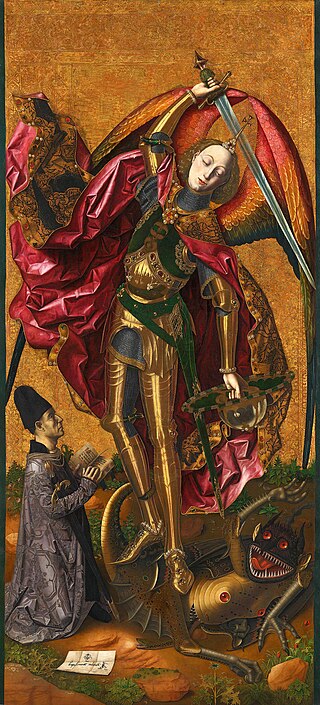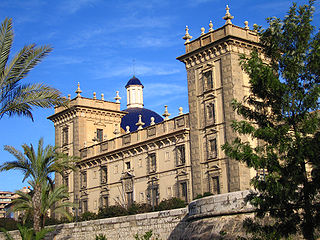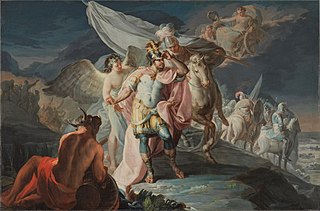
Francisco José de Goya y Lucientes was a Spanish romantic painter and printmaker. He is considered the most important Spanish artist of the late 18th and early 19th centuries. His paintings, drawings, and engravings reflected contemporary historical upheavals and influenced important 19th- and 20th-century painters. Goya is often referred to as the last of the Old Masters and the first of the moderns.

Zaragoza also known in English as Saragossa, is the capital city of the province of Zaragoza and of the autonomous community of Aragon, Spain. It lies by the Ebro river and its tributaries, the Huerva and the Gállego, roughly in the centre of both Aragon and the Ebro basin.

Tourism in Spain is a major contributor to national economic life, contributing to about 12.4% of Spain's GDP. Ever since the 1960s and 1970s, the country has been a popular destination for summer holidays, especially with large numbers of tourists from the United Kingdom, Ireland, France, Germany, Italy, the Benelux, and the United States, among others. Accordingly, Spain's foreign tourist industry has grown into the second-biggest in the world.

The Museo del Prado, officially known as Museo Nacional del Prado, is the main Spanish national art museum, located in central Madrid. It houses collections of European art, dating from the 12th century to the early 20th century, based on the former Spanish royal collection, and the single best collection of Spanish art. Founded as a museum of paintings and sculpture in 1819, it also contains important collections of other types of works. The numerous works by Francisco Goya, the single most extensively represented artist, as well as by Hieronymus Bosch, El Greco, Peter Paul Rubens, Titian, and Diego Velázquez, are some of the highlights of the collection. Velázquez and his keen eye and sensibility were also responsible for bringing much of the museum's fine collection of Italian masters to Spain, now one of the largest outside of Italy.

The Countess of Chinchon is an oil-on-canvas portrait painted ca. 1800 by the Spanish artist Francisco Goya. It is held in the Museo del Prado, Madrid. The painting depicts María Teresa de Borbón, 15th Countess of Chinchón, who had been encouraged by Queen Maria Luisa of Parma and by opportunism to marry Manuel de Godoy, the Prime Minister, in a marriage of convenience. It does not depict the more famous Countess of Chinchón who became the namesake of the cinchona genus of trees and shrubs responsible for early modern quinine production.

The Bilbao Fine Arts Museum is an art museum located in the city of Bilbao, Spain. The building of the museum is located entirely inside the city's Doña Casilda Iturrizar park.

Bartolomé Bermejo was a Spanish painter who adopted Flemish painting techniques and conventions. Born in Cordoba, he is known for his work in the Crown of Aragon, including the Principality of Catalonia and the Kingdom of Valencia. His real name was Bartolomé de Cárdenas: the name Bermejo, which means auburn in Spanish, possibly relates to his hair colour. Bermejo may relate also to his surname, Cárdenas; Cardeno means purplish. He signs himself sometimes as "Bartolomeus Rubeus" meaning possibly "Bartholomew the Redhead".

The Goya Museum is an art museum located in Castres, France. The museum was originally established in 1840 and was named after the Spanish painter Francisco Goya since it specialised in hispanic art from 1947.

José Asensio Lamiel was an Aragonese painter and sculptor born in Calanda in the Spanish comarca of Bajo Aragón.

The Museu de Belles Arts de València is an art gallery in Valencia, Spain, founded in 1913. It houses some 2,000 works, most dating from the 14th–17th centuries, including a Self portrait of Diego Velázquez, a St. John the Baptist by El Greco, Goya's Playing Children, Gonzalo Pérez's Altarpiece of Sts. Ursula, Martin and Antony and a Madonna with Writing Child and Bishop by the Italian Renaissance master Pinturicchio. It houses a large series of engravings by Giovan Battista Piranesi.

Municipal Museum of Algeciras is a museum in Algeciras, Spain, located at the northern end of the Parque de las Acacias de Algeciras. It was established in 1995 and is run by the city's cultural department. It houses a large collection of archaeological items which were found in different parts of the city. With its two main divisions, archaeology and history, the museum documents three periods in the city's history: Roman-Byzantine Algeciras, the Andalusian city, and the modern era. A third division, religious art, is located in the Capilla del Cristo de la Alameda.

The National Museum of Ceramics and Decorative Arts "González Martí", is a museum in Valencia, Spain, devoted to ceramics –with special importance to Valencian ceramics–, porcelains and other decorative arts such as textile art, traditional costumes, and furniture. It is one of the National Museums of Spain and it is attached to the Ministry of Culture.
Lita Cabellut is a Spanish multidisciplinary artist who lives and works in The Hague, Netherlands. Cabellut works on large scale canvases using a contemporary variation of the fresco technique.

The Museo Goya - Colección Ibercaja - Museo Camón Aznar is a fine arts museum in Zaragoza, Spain. It opened in 1979 under the name Museo Camón Aznar, after the art collector from the city who had contributed the nucleus of its collection.

The Museo de Arte Moderno y Contemporáneo de Santander y Cantabria is an art museum in Santander, Spain. Today the museum specializes in modern and contemporary art.

The Pontevedra Museum is a museum in the Galician city of Pontevedra in Spain. It was founded by the Provincial Deputation of Pontevedra on 30 December 1927 and has six buildings for its exhibitions. It has permanent and temporary exhibition rooms. The museum's collections are multidisciplinary, classified into rooms for painting, sculpture, archaeology, decorative arts, engraving and ethnography.

The Victorious Hannibal Seeing Italy from the Alps for the First Time, or Hannibal the victor crossing the Alps, or Hannibal the victorious from the heights of the Alps looks out over the plains of Italy is an oil painting by Spanish painter Francisco Goya, dating from his early years. It is the oldest documented work by the painter.

Self-portrait at 69 years is an oil painting by the Spanish painter Francisco Goya. Two original versions of this work have been preserved. One of the paintings, painted on canvas, is housed in the collections of the Prado Museum. The other, created on wood panel, is located in the Real Academia de Bellas Artes de San Fernando in Madrid. Both paintings were created in 1815, in the post-war period, and depict a very similar image of the artist. This is one of the most sincere and direct self-portraits of the painter.
























